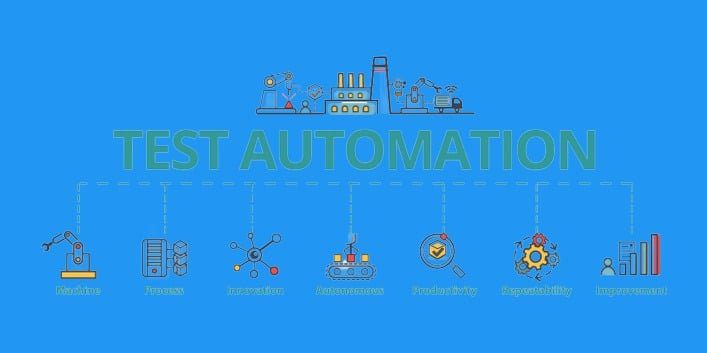Test Automation Management is a critical aspect of the software testing process. It plays a significant role in determining the quality of the software under test.
In order to manage Test Automation, managers must develop strategies and policies that will provide an overall structure along with guidelines and procedures to achieve an increase in quality, efficiency, cost reduction, and productivity.
Test Automation Management is a body of knowledge that can be utilized by managers in the organization. It will enable them to understand the principles of Test Automation Management and its effect on the software development processes.

It includes different aspects such as its definition, scope and significance, goals, benefits, types of automation management along with their pros and cons, principles of Test Automation Management; roles, responsibilities, and authorities for Test Automation Management; standards for Test Automation Management; implementation plans for Test Automation Managements; lists of tools involved in Test Automation Management; management information systems for Test Automation Management, etc.
In this article, we will discuss 5 Tips for Managing the Time and Resources for Testing automation.
Strategizing Test Automation
Test automation is a vital part of the software development process, but frequently it is performed by test engineers who are not skilled enough to execute it efficiently. They are not able to define the best strategy and organize work correctly.
In order to achieve the best results from automation, you need to apply strategies and techniques that will allow you to automate testing quickly, effectively, and reliably.
Test automation scripts are often created using different tools. This makes things more complicated because each tool requires a different approach in order to get the best results. For example, using Selenium IDE you can create a script that will run in your browser but if you want to automate tests for mobile apps you’ll need something else.
Test automation is an important part of your application lifecycle so the sooner you start automating your tests the better it is. Make sure that you have a clear picture of how much time and effort it will take to complete testing before or right after development starts. The estimation should be done by people who know the project.
Here are some questions you can ask yourself about your test automation strategy:
- How many people will be involved in writing tests and maintaining them?
- Where do the tests live, in source or configuration management?
- How structured are the tests, and how often will they need to be maintained?
- Is your test automation built on top of a framework? If so, how mature is it?
- Who builds the code that is tested by the test automation, and who maintains it?
Choosing The Right Framework
It is crucial for you to choose a good test automation framework for your organization. It doesn’t matter what your background or experience is, or what industry you are in, it is vital that you choose a test automation framework that will work best for your organization.
Test Automation Frameworks come in a variety of forms and sizes. They are all designed to help with the testing process so that there is more time and money available to focus on improving the company’s products and services. Choosing the right framework can help improve efficiency, manageability, and control.
Choosing the right test automation framework can help ensure that an organization’s testing processes are running smoothly. In addition, choosing the right framework can also help reduce costs, improve productivity and increase quality by providing accurate data.
Test Automation Frameworks are important components of any organization’s software development lifecycle. While there are many frameworks to choose from, each one has its unique qualities and features which makes them suitable for different organizations’ needs.
Before selecting a test automation framework, consider what each one offers in terms of functionality, support, and price. By taking these factors into account when making your decision you can be sure that you have found the right tool for your organization.
Don’t Automate Everything
One of the most common mistakes I see in test management is trying to automate too much. Automation is expensive, and an over-reliance on automation can be self-defeating. Too much automation makes it easier to run tests, but harder to understand what results mean.
Getting the balance right isn’t easy, but here are some tips that should help you make better decisions about when you should automate and when you shouldn’t:
- Don’t automate anything that doesn’t need to be automated. If a manual process works, why change it?
- Don’t automate anything that isn’t valuable. In other words, automate things that return more than they cost. This can be a hard thing to predict, so I recommend using a sliding scale for values against dollars spent. For example, if it costs $300 to save 10 hours of work time by automating something, don’t automate it unless it is worth at least $30 per hour saved (and preferably more).
- Don’t automate things that aren’t repeatable or reliable. Automating a flaky test is usually not worth the trouble because it will just give you inconsistent results.
- Don’t automate something that has a simple solution. Not using automation correctly leads to a waste of time and resources
Prioritize the test cases
Some testers find it difficult to prioritize the test cases they want to automate. The reasons behind such difficulty can be traced back to the following factors:
- Test automation is time-consuming and requires a lot of effort.
- Test cases are less interesting than features or defects.
- Defects are easy to identify, but test cases should be defined in advance.
- Automation effort is not easily measurable.
- Test cases automation is a one-time investment that has no tangible benefit until later (which makes it less attractive).
It is important to understand that test automation investment can only show its full value when the time comes for maintenance and enhancement.
When the application under test changes, adding new functionalities, modifying existing ones, or changing the interface and data structures, it is essential to have already written down the expected result for each of these actions with automated tests in order to keep the overall quality level.
Set Goals And Deadlines For Test Automation
If you are in a test automation management role, you can improve your performance by setting goals and deadlines for test automation. Here are some tips for achieving these goals:
- Make sure everyone understands the need for test automation. Test automation frees up time and resources for other important tasks. Hold meetings with stakeholders to discuss the benefits of test automation. Test automation is also important when testing a new system because it reduces the risk of having to make changes later on.
- Explain how test automation works in detail to all stakeholders. You must be able to explain how the automated tests can be run, modified, or removed without compromising the integrity of the software being tested. This helps everyone understand how best to use automated tests and prevents misunderstandings.
- Test automation is not a panacea! Test automation will help you reduce the amount of manual testing required, but it will not remove the need for manual testing completely. It’s better to automate 80% than to automate 100% because this still leaves room for manual testing. As with all tools, you must use it correctly if you want any benefit from using it at all.
Test automation is an ongoing process that requires maintenance and updating over time as requirements change and new features are added to your software product.
Conclusion
The tips provided in the present article are helpful to make test automation management more effective and efficient. It is a good idea to consider all the above test automation best practices in your project. You can also use cloud-based test automation tools like LambdaTest to perform these operations fast and easily.
LambdaTest is an automated testing platform that allows you to test your web and mobile applications on 3000+ real browsers and operating systems. LambdaTest has a cloud-based infrastructure and is completely compatible with any existing testing frameworks.
It provides the best cloud-based cross-browser testing platform for QA engineers and web developers with support for various automation testing frameworks including Selenium. It allows the users to test their website across the browsers with the help of recording, playback, and manual testing.



